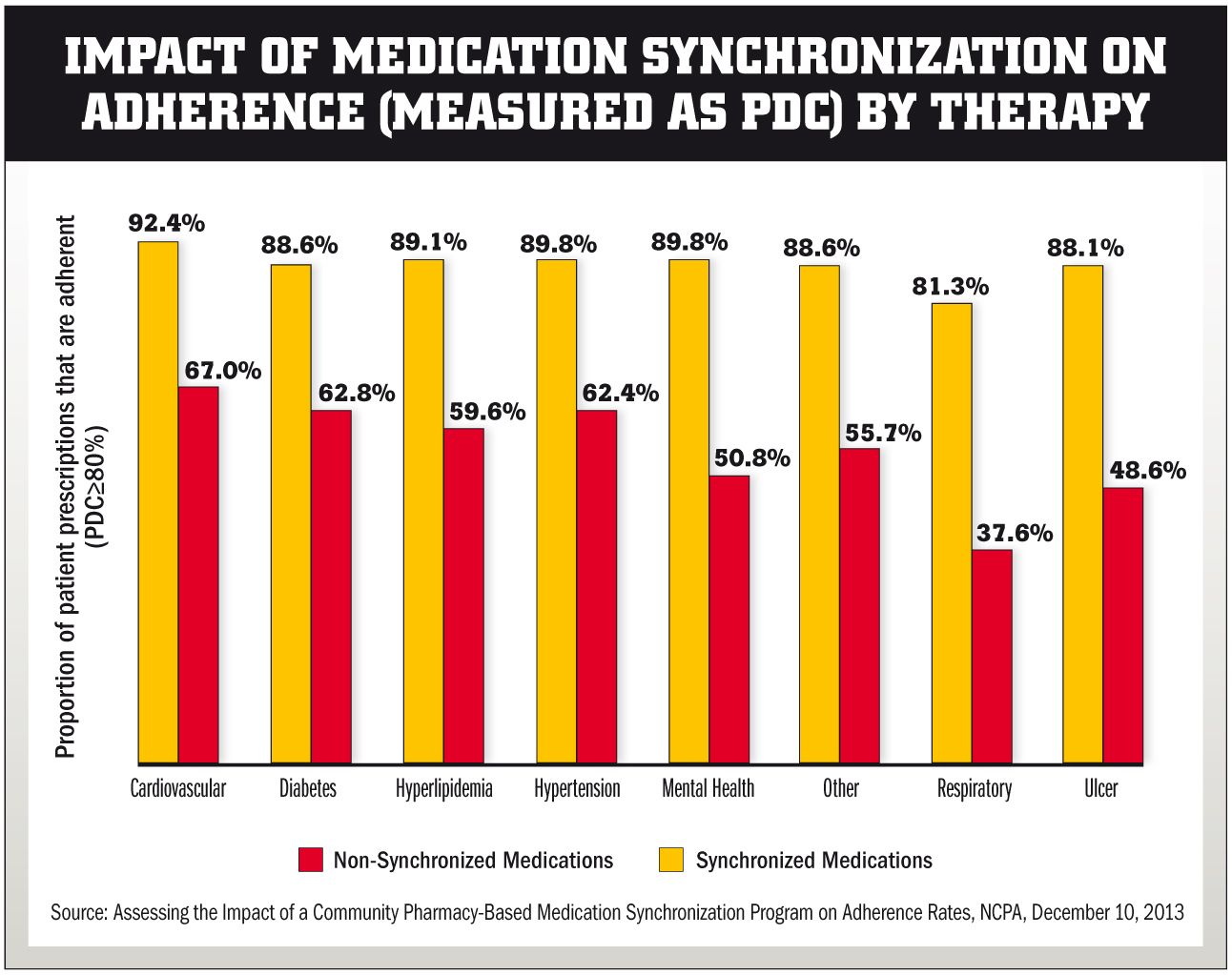Med synchronization through community pharmacies brings greater adherence
NCPA study finds that community pharmacy med-synch programs can improve patients’ medication adherence and boost the pharmacy's bottom line.
Community pharmacies that adopt medication synchronization programs can significantly improve their patients’ medication adherence and contribute to their pharmacy’s bottom line, according to a study conducted by the National Community Pharmacists Association (NCPA) and its technology partner Ateb.
Patients who were enrolled in a medication synchronization program from their local pharmacy averaged more than 100 additional days of therapy annually and 30% more likely to take their medication as prescribed than those patients not part of a synchronized program, according to NCPA.
The study was conducted at 10 independent community pharmacies throughout the nation from April 1, 2013 through September 30,2013. More than 1,300 patients were enrolled in a synchronization program. Each patient was called monthly to discuss their medication and dosing regimens and determine if any doctor visits or hospitalizations changed their medication therapy. The patient then confirmed the medications needed before they are dispensed.

The findings

Patients with a high medication burden were eligible for the study. Pharmacy dispensing data was collected for six months before the study and then six months during the study to determine medication adherence rates. Similar groups of patients in the enrolled program and control group were compared. Patients in these groups had at least one of four chronic diseases: cardiovascular disease, diabetes, hypertension, and/or respiratory disease. In the cardiovascular disease patients, the medications were heart failure drugs, antianginal agents, antiarrhythmic drugs, and antiplatelet agents.
“Patients receiving synchronization services averaged an additional 103 days on therapy than those not enrolled in such a program (337 versus 234, respectively). Nearly 90% of patients who received synchronized refills were considered adherent as measured by the proportion of days covered compared to 56% of patients not receiving synchronized refills,” NCPA stated.
Other findings from the study included:
· An average of 3.4 more refills per prescription filled over 12 months for enrolled patients than non-enrolled patients. The enrolled patients were taking on average 5.9 medications and the 10 pharmacies dispensed 20 more prescriptions per year on average for these patients.
· First-fill abandoned prescriptions were reduced by more than 90% in the enrolled group.
“This study confirms that a personalized medication synchronization service delivered by community pharmacies is impactful, scalable, and able to be replicated in any community pharmacy,” said NCPA CEO B. Douglas Hoey, RPh, MBA. “It’s also further evidence of the positive impact that these and other types of pharmacy-provided services can have on patient health. As trusted, accessible medication experts, community pharmacists are ideally positioned to counsel patients and ensure they take medications as prescribed and understand their importance to better health.”